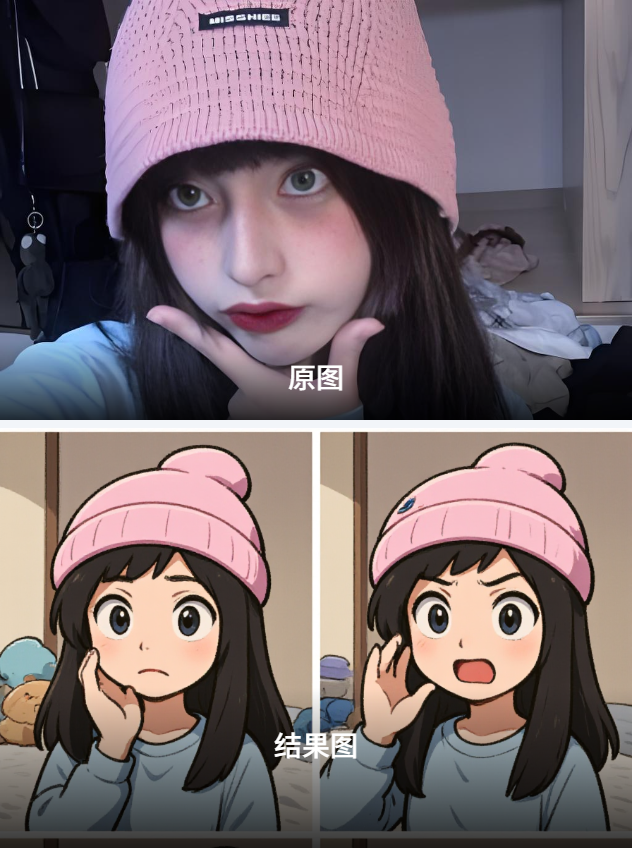Create Stunning 4-Panel Anime Emoticons with AI: A Comprehensive Tutorial
1. Workflow Overview

This workflow generates 4-panel anime-style emoticons with exaggerated expressions (e.g., thinking, surprised, shy, angry). It integrates image understanding, style transfer, and facial control, outputting uniformly divided emoticon images.
2. Core Models
Model Name | Function |
|---|---|
Florence-2-large | Vision-language model for image segmentation and captioning. |
Janus-Pro-1B | Multimodal model to analyze input images and generate detailed captions. |
Stable Diffusion (Flux) | Base image generation with LoRAs for anime stylization. |
PuLID Flux | Facial feature control for expression consistency. |
3. Key Nodes
3.1 Required Custom Nodes
Florence2 Nodes: Install via ComfyUI Manager for segmentation.
JanusImageUnderstanding: Manually install Janus-Pro.
PuLID Flux Nodes: Download pulid_flux_v0.9.1.safetensors to
models/pulid.
3.2 Dependencies
LoRAs:
Flux_GhibliStyle_V1.0(stylization).GPT-4o_EmoticonConsistency_V1.0(expression control).Download from platforms like LibLibAI to
models/loras.
4. Workflow Structure
Group Name | Inputs | Outputs | Logic |
|---|---|---|---|
Florence2 | Reference image | Character mask + caption | Segments角色 and describes clothing. |
Janus | Reference image | Detailed caption | Enhances text prompts. |
Text Merge | Florence2 + Janus texts | Combined prompt | Generates final positive prompt. |
PuLID Flux | Mask + prompt | Conditioned model | Controls facial expressions. |
Generation | Resolution (768x1024), seed, sampler | 4-panel latent | Uses Euler sampler. |
Post-process | Latent + VAE | Final PNG | Decodes and saves output. |
5. Inputs & Outputs
Inputs:
Required: Reference image (1024x1024), prompt template (e.g., "exaggerated expressions + white shirt").
Optional: Seed value, LoRA weights (default 0.45-1.0).
Output: 4-panel emoticon PNG (with metadata).
6. Notes
VRAM: ≥12GB recommended; high resolutions may cause OOM.
Debugging: Missing nodes can be installed via
ComfyUI-Manageror manual model downloads.Compatibility: Only works with Flux-based Stable Diffusion models.